How to Launch an Online Pottery Store: A Guide
So, you’ve got a passion for pottery and a dream of turning that passion into a thriving online business? Well, you’re in the right place! Launching an online pottery store is not just about throwing clay on a wheel; it's about crafting a unique brand, understanding your market, and connecting with customers who appreciate your art. This guide outlines essential steps to successfully launch your online pottery store, covering everything from market research to marketing strategies, ensuring you have the knowledge needed to thrive in the pottery business.
First things first, let’s dive into the world of pottery! Understanding the current trends, customer preferences, and potential competitors in the pottery market is crucial. Think of it as the foundation of your pottery wheel—without a solid base, everything else will be wobbly. Are people leaning more towards functional pottery, like dinnerware, or are they swooning over decorative pieces? By keeping your finger on the pulse of the market, you can position your store effectively and cater to your target audience.
Now that you’ve got a grasp on the market, it’s time to find your sweet spot. Identifying a specific niche within the pottery market is crucial. Whether you want to focus on handmade pieces, functional ware, or decorative items, having a well-defined niche can attract a dedicated customer base. Just like a potter selects the right clay for their creations, you need to choose the right niche that resonates with your style and passion.
To understand what potential customers are looking for in pottery products, conducting surveys and analyzing data is key. This research will inform your product selection and marketing strategies. Think of it as gathering ingredients for a delicious recipe—you wouldn’t want to bake a cake without knowing if your guests prefer chocolate or vanilla! Knowing what your audience desires will help you create products that truly resonate.
Who are your ideal customers? Understanding their age, interests, and purchasing behavior will help tailor your offerings and marketing efforts to meet their needs. Are they young adults looking for trendy home decor, or perhaps older individuals searching for unique gifts? By identifying these demographics, you can craft messages that speak directly to them, making your marketing efforts more effective.
Don’t forget to check out what your competitors are up to! Analyzing what they are selling, their pricing strategies, and customer engagement techniques can provide valuable insights. This analysis can highlight gaps in the market that your store can fill. For instance, if competitors are focusing heavily on functional pottery but neglecting decorative items, that could be your golden opportunity!
Creating a strong brand identity is essential for standing out in the pottery market. Your brand should reflect your unique style and resonate with your target audience. Think of your brand as the signature glaze on your pottery—it’s what makes your work uniquely yours. From your logo to your social media presence, everything should convey your artistic vision and values.
Alright, let’s get into the nitty-gritty of setting up your online store! Choosing the right platform and designing an appealing website are key steps in establishing your online presence. A user-friendly site can enhance customer experience and boost sales, making your customers’ shopping journey as smooth as a well-glazed pot.
When it comes to e-commerce platforms, there are plenty of options out there. Evaluate different platforms based on features, ease of use, and pricing. Selecting the right one can streamline your operations and improve customer satisfaction. Think of it like choosing the right tools for your pottery studio—having the right setup makes all the difference!
Your website should be an extension of your artistry, so focus on creating an aesthetically pleasing and functional site that showcases your pottery products effectively. Good design can significantly impact customer engagement and conversion rates. Imagine walking into a beautifully arranged pottery studio versus a cluttered one; which one would you want to explore? Your website should invite customers in and keep them browsing!
1. What are the initial costs of starting an online pottery store?
Starting an online pottery store can vary in cost depending on your niche, materials, and marketing strategies. However, you should budget for website hosting, domain registration, and initial inventory.
2. How do I handle shipping and fulfillment?
Research shipping options that work best for your products. Consider using a fulfillment service if you want to streamline the shipping process, or handle it in-house if you prefer more control.
3. What marketing strategies should I use?
Utilize social media platforms, email marketing, and content marketing to reach your audience. Engaging with the pottery community online can also help build your brand.
4. How can I improve customer retention?
Offering excellent customer service, loyalty programs, and personalized follow-ups can significantly enhance customer retention. Happy customers are more likely to return!
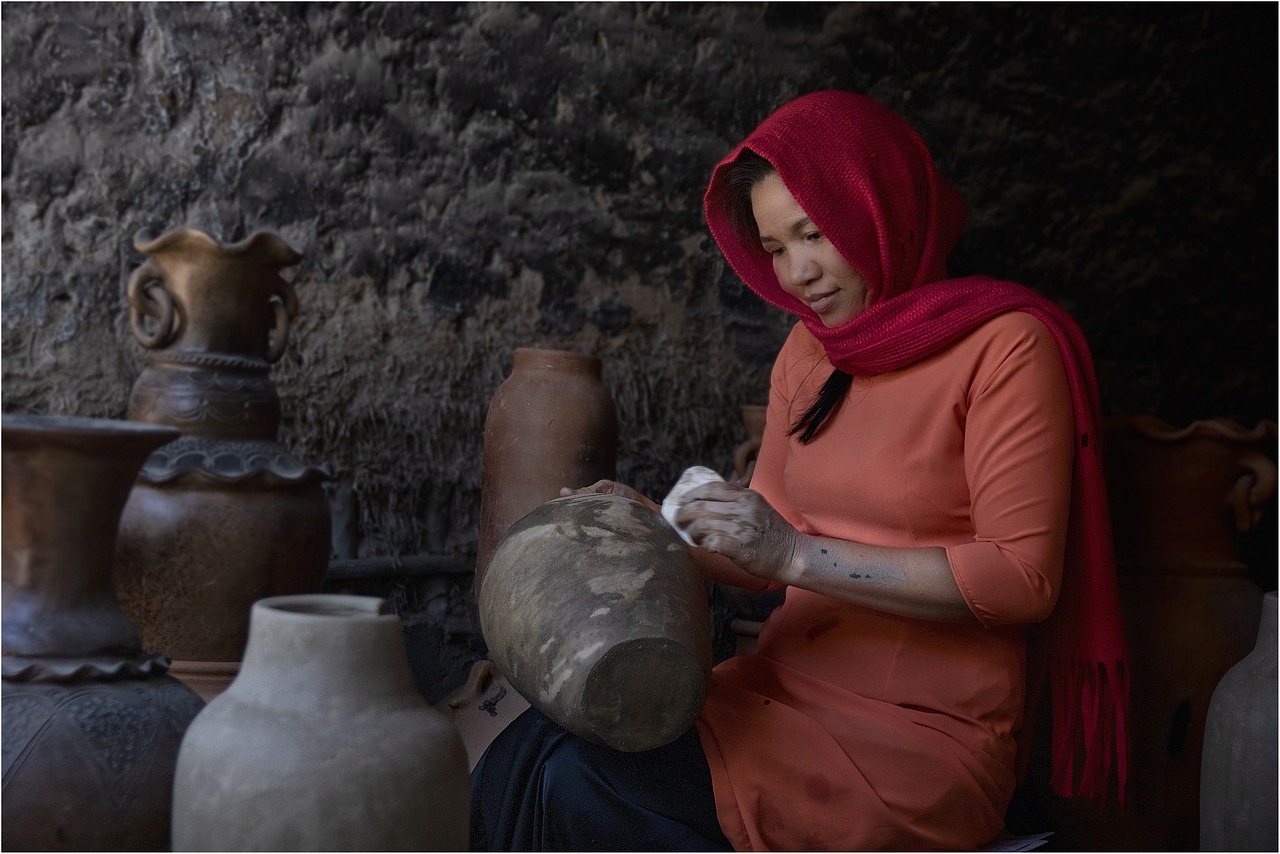
Understanding the Pottery Market
When diving into the world of pottery, it's crucial to first grasp the landscape of the market. The pottery industry is a vibrant and dynamic space, characterized by a diverse array of products that cater to various tastes and preferences. Currently, there is a noticeable trend towards eco-friendly and sustainable materials, as consumers become increasingly conscious of their environmental footprint. This shift not only influences what people buy but also how they perceive brands. So, if you're looking to carve out your niche, understanding these trends is your first step.
Moreover, customer preferences play a pivotal role in shaping the pottery market. Have you ever wondered why some pottery pieces fly off the shelves while others gather dust? It's all about knowing your audience. For instance, younger consumers might lean towards contemporary designs, while older generations may appreciate more traditional styles. This divergence in taste creates a rich tapestry of opportunities for sellers. To truly cater to your target demographic, consider conducting surveys or engaging with potential customers through social media. Their feedback can be a goldmine of information!
But it’s not just about understanding what customers want; it’s equally important to keep an eye on your competitors. Analyzing what others are doing can provide invaluable insights. For instance, take a look at the following aspects:
| Competitor | Product Range | Price Points | Customer Engagement |
|---|---|---|---|
| Pottery Barn | Home Decor, Functional Items | Mid to High | Strong social media presence |
| Local Artisan Shop | Handmade, Unique Pieces | Varied | Community events and workshops |
| Online Marketplace | Wide Variety | Low to High | User reviews and ratings |
By examining your competitors, you can identify gaps in the market that your store could fill. Perhaps there's a demand for custom pottery items or a specific style that isn't widely available. This understanding will not only help you position your products effectively but also allow you to craft a unique selling proposition that resonates with your audience.
In conclusion, understanding the pottery market is akin to being a skilled potter who knows their clay. It requires a mix of intuition, research, and a finger on the pulse of current trends. By staying informed about customer preferences and competitor activities, you can create a business that not only meets demand but also stands out in a crowded marketplace. So, are you ready to get your hands dirty and mold your online pottery store into a success?
- What are the current trends in the pottery market? - Eco-friendly materials and unique, handmade designs are trending.
- How can I identify my target audience? - Conduct surveys and engage with potential customers on social media.
- Why is competitor analysis important? - It helps you find market gaps and understand pricing strategies.

Choosing Your Niche
When it comes to launching your online pottery store, choosing the right niche is like picking the perfect clay for your masterpiece. It's crucial to identify a specific area within the vast world of pottery that resonates with both your passion and your target audience. By narrowing your focus, you can attract a dedicated customer base that appreciates what you have to offer. Think about what excites you in the pottery realm—whether it's handmade pieces, functional ware, or decorative items. Each niche has its unique charm and appeal.
For instance, if you have a penchant for creating functional pottery, you might want to specialize in items like mugs, bowls, or plates. These items are not only practical but also provide an opportunity for creativity in design. On the other hand, if you lean towards the artistic side, focusing on decorative pottery can allow you to explore intricate designs and unique styles that serve as conversation starters in any home. The key here is to align your niche with your personal interests and the preferences of your potential customers.
To truly understand what niche may work best for you, consider conducting some research. Engaging with your audience through surveys or social media polls can provide valuable insights into what people are looking for in pottery. You might discover that there's a growing demand for eco-friendly pottery or perhaps a trend in minimalist designs. This kind of information can guide you in selecting a niche that not only excites you but also has market potential.
Additionally, analyzing the competition is essential. Take a look at what other pottery stores are offering. What are their best-selling items? How do they engage with their customers? By examining competitor offerings, you can identify gaps in the market that your store could fill. For example, if you notice a lack of personalized pottery options, this could be your chance to shine by offering custom designs that cater to individual tastes.
In summary, choosing your niche is about finding that sweet spot where your passion meets market demand. It's about creating a unique identity that sets you apart from the rest. So, whether you decide to focus on functional pottery, artistic creations, or something entirely different, make sure it aligns with your vision and the needs of your potential customers. This will not only help you build a loyal customer base but also enable you to thrive in the competitive world of online pottery.
- What is a niche in the pottery market? A niche refers to a specific segment of the market that you choose to focus on, such as handmade pottery, functional ware, or decorative items.
- How do I know which niche to choose? Consider your personal interests, conduct market research, and analyze competitors to find a niche that excites you and has demand.
- Can I change my niche later on? Yes, as your business evolves, you can adapt and shift your niche based on market trends and customer feedback.
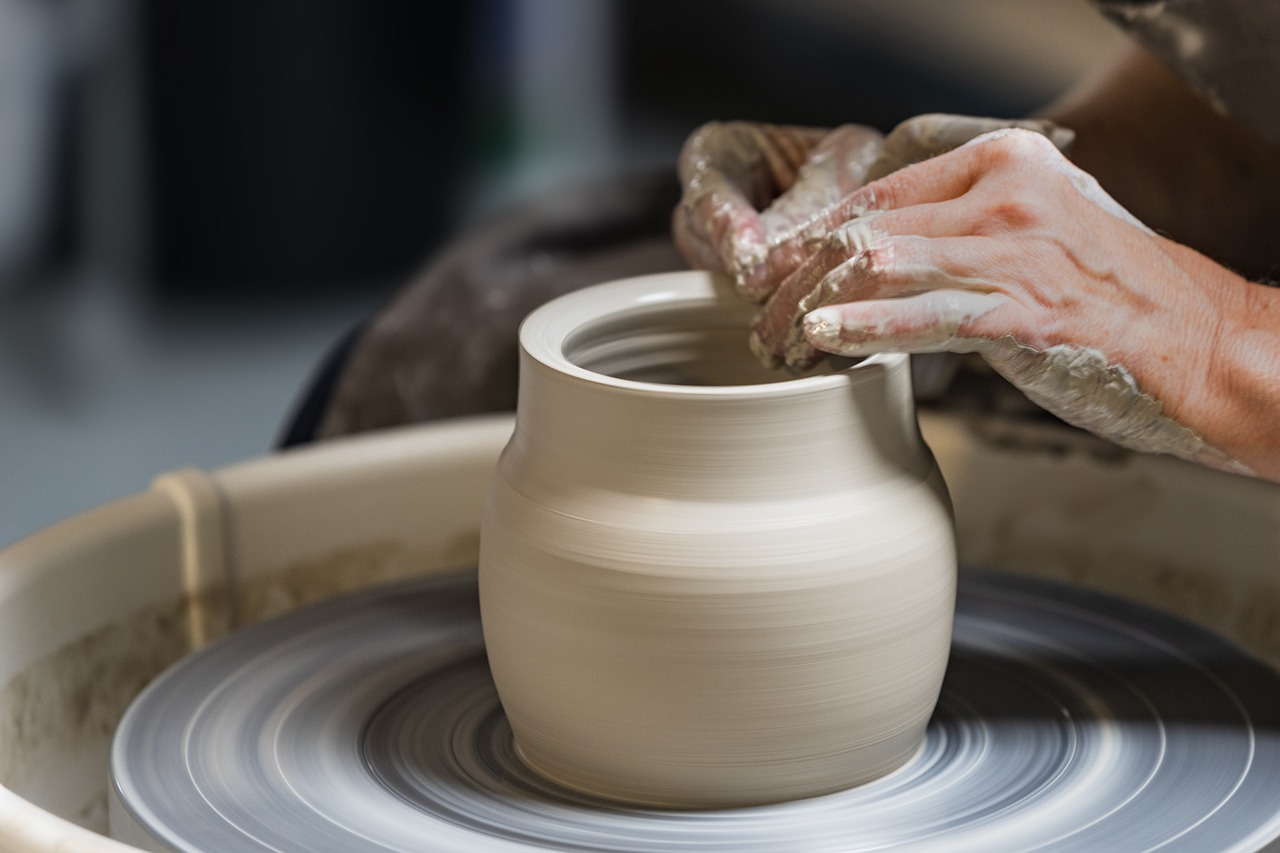
Researching Customer Preferences
When it comes to launching your online pottery store, understanding your potential customers is like having a treasure map; it guides you to the gold! Researching customer preferences is essential for not only selecting the right products but also for crafting marketing strategies that resonate. So, how do you uncover what your audience truly desires? Well, it starts with asking the right questions and gathering valuable insights.
One effective way to dive deep into customer preferences is by conducting surveys. These surveys can be distributed through social media, email newsletters, or even on your website. You might ask questions like:
- What types of pottery do you prefer—functional or decorative?
- What price range are you comfortable with when purchasing pottery?
- Are you interested in eco-friendly or sustainable pottery options?
These questions can help you gauge the interests and expectations of your target audience. But don't stop at surveys! Analyzing online behavior is equally crucial. Tools like Google Analytics can provide insights into what products are getting the most clicks, which pages customers spend the most time on, and what leads to abandoned carts. This information is like gold dust, allowing you to adjust your offerings and website layout to better meet customer needs.
Additionally, tapping into social media platforms can reveal trends and preferences. Platforms like Instagram and Pinterest are rich with visual content, making them perfect for understanding what styles and types of pottery are currently captivating audiences. Look for popular hashtags related to pottery and engage with the community to gather feedback on what resonates with them.
Another avenue to explore is customer reviews and feedback on competitor websites. Check out what people are saying about their experiences with similar products. Are there common complaints? Do customers rave about certain features? This information can help you identify gaps in the market and areas where you can excel.
In summary, researching customer preferences is a multi-faceted approach that includes surveys, online behavior analysis, social media engagement, and competitive analysis. By taking the time to understand what your customers want, you’re not just throwing spaghetti at the wall to see what sticks; you’re crafting a pottery collection that truly speaks to their hearts. Remember, the more you know about your audience, the better you can serve them, and that’s the key to building a successful online pottery store!
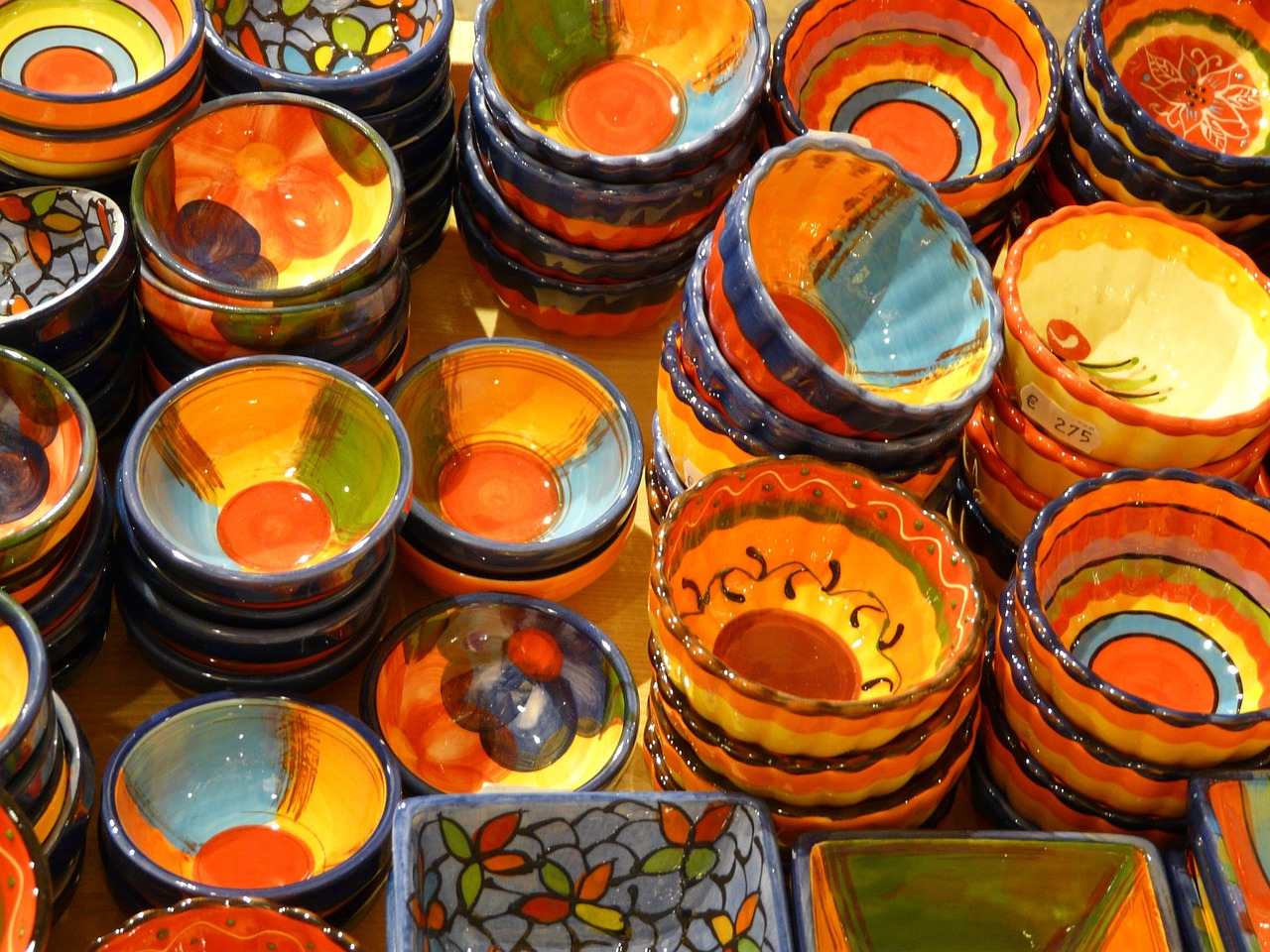
Identifying Target Demographics
Understanding your target demographics is like having a treasure map in the world of online pottery sales. It’s essential to know who your ideal customers are so you can tailor your offerings to meet their specific needs. Are they young adults looking for unique home decor, or perhaps older individuals seeking functional pottery for their kitchens? By pinpointing these characteristics, you can create a more personalized shopping experience that resonates with your audience.
To get started, consider conducting surveys or utilizing social media platforms to gather insights about your potential customers. Ask questions like:
- What age group do you belong to?
- What types of pottery do you prefer—functional or decorative?
- How often do you purchase pottery items?
These questions will help you build a clearer picture of your customer base. Additionally, analyzing your competitors can provide valuable information about their target demographics. Look at their social media followers and customer reviews to see who is engaging with their products. This can reveal patterns in customer behavior that you can leverage for your own store.
Another crucial aspect is understanding the interests and lifestyle of your target audience. For instance, if your pottery appeals to eco-conscious consumers, emphasizing sustainable practices in your production process can be a significant selling point. Similarly, if you discover that your target demographic enjoys DIY projects, consider offering pottery kits or workshops that encourage hands-on creativity.
Finally, it’s important to keep your target demographic dynamic. People's preferences evolve, and staying updated with trends will help you adapt your product offerings accordingly. Regularly revisiting your customer data and engaging with your audience through newsletters or social media can help you stay in tune with their changing needs.
Q: How can I effectively gather information about my target demographics?
A: Utilize surveys, social media polls, and customer feedback to gather insights. Engaging with your audience directly can provide valuable data.
Q: What tools can I use to analyze customer demographics?
A: Tools like Google Analytics, social media insights, and e-commerce platform analytics can help you understand who your customers are and how they interact with your store.
Q: Should I focus on a specific age group for my pottery store?
A: While it can be beneficial to target a specific age group, consider broadening your focus if your products can appeal to multiple demographics. This can increase your potential customer base.
Q: How often should I update my understanding of target demographics?
A: Regularly reviewing your customer data and market trends—at least once a quarter—can help you stay relevant and responsive to your audience's needs.
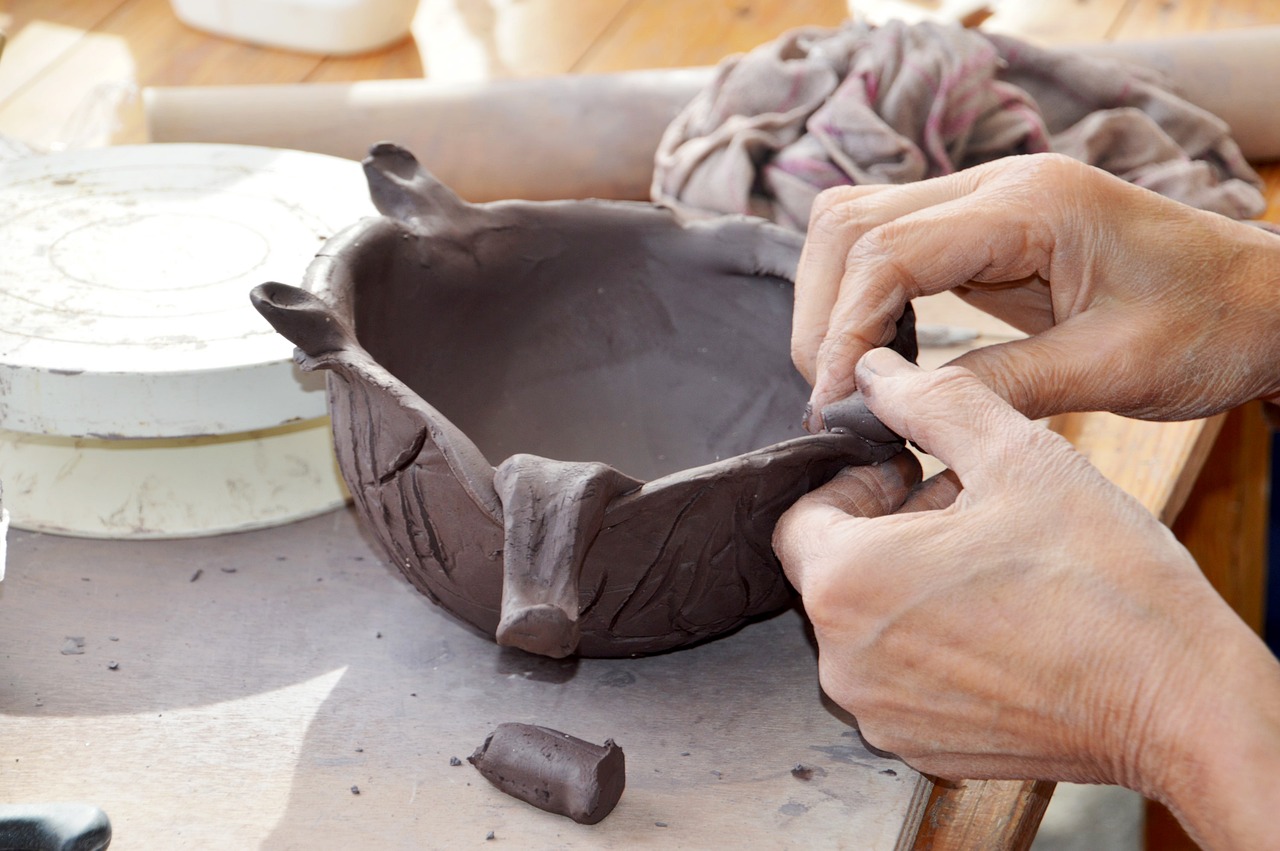
Analyzing Competitor Offerings
When diving into the world of pottery, one of the most crucial steps you can take is to analyze your competitors. Understanding what others are doing not only provides insights into the market but also helps you identify opportunities to differentiate your online pottery store. Start by examining the types of pottery products they offer. Are they focusing on functional items like dinnerware, or are they more into decorative pieces? This analysis will help you pinpoint gaps in the market that your store can fill.
Next, look at their pricing strategies. Are they offering premium products at high prices, or are they competing on affordability? This information is vital because it allows you to position your products effectively. For instance, if you notice that most competitors are priced on the higher end, you might consider offering a more affordable line of products to attract budget-conscious customers.
Additionally, pay attention to their marketing and customer engagement techniques. How are they promoting their products? What platforms are they using? Are they active on social media, and if so, how do they interact with their audience? Understanding these aspects can provide you with a roadmap for your own marketing strategies. Consider the following key areas when analyzing your competitors:
- Product Range: What types of pottery do they sell? Are there unique items that stand out?
- Pricing: How do their prices compare to yours? Are there pricing strategies you can adopt?
- Marketing Techniques: What channels are they using for promotion? Are they engaging effectively with their audience?
- Customer Reviews: What are customers saying about their products? Are there common complaints or praises?
Lastly, don’t forget to check their online presence. A well-designed website with strong visuals can make a significant difference in attracting customers. Look for elements like user experience, product photography, and ease of navigation. All these factors contribute to how customers perceive their brand and, by extension, how they might perceive yours.
By thoroughly analyzing competitor offerings, you’ll equip yourself with the knowledge needed to carve out your niche in the pottery market. This not only enhances your understanding of the landscape but also empowers you to create a unique selling proposition that resonates with your target audience.
Q: Why is it important to analyze competitor offerings?
A: Analyzing competitor offerings helps you understand market trends, identify gaps, and position your products effectively.
Q: What should I focus on when analyzing competitors?
A: Focus on their product range, pricing strategies, marketing techniques, customer reviews, and overall online presence.
Q: How can competitor analysis improve my marketing strategies?
A: By understanding what works for your competitors, you can adopt successful tactics and avoid common pitfalls in your marketing efforts.

Establishing Your Brand
Creating a strong brand identity is essential for standing out in the pottery market. Your brand is not just a logo or a catchy name; it’s the essence of what your business represents. Think of your brand as a personality—it should resonate with your target audience and reflect your unique style. When potential customers stumble upon your online pottery store, you want them to feel a connection, almost like meeting a friend for the first time. So, how do you establish a brand that captures hearts and minds? Let's dive into some key elements!
First and foremost, you need to define your brand values. What do you stand for? Are you passionate about sustainability, handcrafted artistry, or perhaps modern minimalist designs? Whatever it is, make sure these values shine through in every aspect of your business, from the products you offer to the way you communicate with your customers. For instance, if eco-friendliness is your mantra, consider using sustainable materials and packaging. This not only attracts like-minded customers but also builds trust and loyalty.
Next, think about your visual identity. This includes your logo, color palette, and typography. These elements should reflect the vibe of your pottery and the emotions you want to evoke. A warm, earthy color scheme might resonate with those who appreciate rustic, handmade pieces, while a sleek, modern aesthetic could attract a more contemporary audience. Consistency is key—use the same visual elements across your website, social media, and marketing materials to create a cohesive brand experience.
Another crucial aspect is your brand voice. How do you communicate with your audience? Your tone should align with your brand values and appeal to your target demographic. If your pottery is whimsical and fun, let that shine through in your social media posts and product descriptions. On the other hand, if you’re aiming for a more sophisticated clientele, a polished, elegant tone might be more appropriate. Remember, your voice is what will make your brand relatable and memorable.
Finally, don’t underestimate the power of storytelling. Share your journey, your passion for pottery, and the inspiration behind your creations. People love stories; they create connections. Whether it's a heartfelt blog post about your artistic process or a behind-the-scenes video showcasing your studio, storytelling can elevate your brand and foster a loyal community around it. So, grab your audience's attention and invite them into your world!
To wrap it up, establishing your brand is about creating a strong identity that resonates with your audience. By defining your brand values, crafting a compelling visual identity, finding your unique voice, and sharing your story, you’ll create a brand that not only stands out but also thrives in the competitive pottery market. Remember, your brand is your promise to your customers—make it count!
- What is the first step in establishing my pottery brand?
Start by defining your brand values and what you want your business to represent. - How important is a logo for my pottery business?
A logo is crucial as it serves as the visual representation of your brand; it should be memorable and reflect your style. - Can I change my brand identity later?
Yes, as your business evolves, you can refine your brand identity to better align with your vision and audience. - What role does storytelling play in branding?
Storytelling helps create emotional connections with your audience, making your brand more relatable and memorable.

Setting Up Your Online Store
Setting up your online pottery store is an exhilarating journey that combines creativity with strategic planning. Imagine opening the doors to a virtual gallery filled with your unique pottery pieces, ready to captivate customers from all over the world. But before you dive into the artistic side, there are crucial steps to ensure your online presence is as inviting as your creations. First off, choosing the right e-commerce platform is pivotal. With so many options available, it can feel overwhelming, but let’s break it down.
When evaluating e-commerce platforms, consider factors such as features, ease of use, and pricing. Popular platforms like Shopify, WooCommerce, and Etsy each have their pros and cons. For instance, Shopify is known for its user-friendly interface and extensive app ecosystem, while WooCommerce offers more customization options if you’re familiar with WordPress. Here's a quick comparison to help you decide:
| Platform | Ease of Use | Customization | Pricing |
|---|---|---|---|
| Shopify | Very Easy | Limited | Starts at $29/month |
| WooCommerce | Moderate | Highly Customizable | Free (but hosting costs apply) |
| Etsy | Very Easy | Limited | Listing fees apply |
Once you've selected a platform, the next step is to design an attractive website. Your website should not only reflect your brand's personality but also be functional and user-friendly. Think of your website as the digital storefront of your pottery business. Just as you would arrange your physical store to draw in customers, your website layout should guide visitors through your offerings seamlessly. Use high-quality images and engaging descriptions that tell the story behind each piece. After all, pottery is not just about the product; it's about the passion and craftsmanship that goes into it.
Don't forget to incorporate essential features that enhance customer experience. These include:
- Easy Navigation: Ensure that customers can find what they’re looking for without frustration.
- Mobile Responsiveness: With many shoppers using their smartphones, your site must look great on all devices.
- Secure Payment Options: Offering multiple secure payment methods builds trust and encourages sales.
As you set up your online store, remember that your website is a reflection of your brand. It should evoke the same feelings of warmth and creativity that your pottery does. Think about how you want your customers to feel when they visit your site. Are you aiming for a rustic, homey vibe, or a sleek, modern aesthetic? Whatever your vision, make sure it resonates throughout your site.
Lastly, once your online store is live, don’t just sit back and wait for customers to roll in. Implement a marketing strategy that includes social media promotion, email marketing, and SEO optimization. Engage with your audience through captivating content that showcases your pottery and shares your journey as an artist. Building a community around your brand can turn casual visitors into loyal customers.
Q1: How long does it take to set up an online pottery store?
A1: The time it takes can vary, but with the right platform and preparation, you could be up and running within a few days to a couple of weeks.
Q2: Do I need a business license to sell pottery online?
A2: Yes, depending on your location, you may need a business license or permits. It's essential to check local regulations.
Q3: What are the best ways to market my pottery online?
A3: Utilize social media platforms, engage with pottery communities, and consider email marketing to reach potential customers.

Selecting the Right E-commerce Platform
When it comes to launching your online pottery store, choosing the right e-commerce platform is akin to selecting the perfect clay for your masterpiece. The platform you select will serve as the foundation of your online business, influencing everything from user experience to your overall sales performance. So, how do you know which platform is the best fit for your pottery store? Let's break it down.
First and foremost, consider the features that each platform offers. Some platforms, like Shopify and WooCommerce, provide a plethora of tools and integrations that can enhance your store's functionality. For instance, Shopify is renowned for its ease of use, allowing you to set up your store without needing extensive technical skills. On the other hand, WooCommerce offers greater customization options, perfect for those who want their store to reflect their unique style. Think about what features are non-negotiable for you—be it inventory management, payment gateways, or shipping options.
Next up is pricing. While it might be tempting to go for the cheapest option, consider the long-term implications. Some platforms charge monthly fees, while others take a percentage of your sales. A platform that seems affordable at first might end up costing you more in the long run. It’s essential to calculate your expected sales volume and determine which platform offers the best value for your budget.
Another critical aspect is the user experience. Your e-commerce platform should not only be easy for you to manage but also user-friendly for your customers. A complicated checkout process can lead to abandoned carts, which is the last thing you want when you’re trying to sell your beautiful pottery. Ensure that the platform you choose offers a seamless shopping experience, from browsing products to completing a purchase.
Additionally, consider the level of customer support provided by the platform. When running an online store, you may encounter various issues, from technical glitches to payment processing problems. Having access to reliable customer support can save you time and frustration. Look for platforms that offer 24/7 support, live chat options, or extensive documentation to help you troubleshoot any issues that may arise.
Lastly, think about scalability. As your pottery business grows, your e-commerce platform should be able to grow with you. Choose a platform that can handle increased traffic and sales without compromising performance. Some platforms offer advanced features or integrations that can help you expand your business, such as email marketing tools or social media integrations. This scalability will ensure that your online store remains robust as you attract more customers.
In summary, selecting the right e-commerce platform is a crucial step in launching your online pottery store. By evaluating features, pricing, user experience, customer support, and scalability, you can make an informed decision that sets your business up for success. Remember, this platform will be the canvas upon which you paint your pottery business, so choose wisely!
- What is the best e-commerce platform for beginners?
Platforms like Shopify are great for beginners due to their user-friendly interface and comprehensive support.
- Can I switch e-commerce platforms later?
Yes, but it can be a complex process. It’s best to choose a platform that meets your long-term needs from the start.
- Are there any free e-commerce platforms?
While some platforms offer free trials, most will require payment for full features. Look for platforms that offer a good balance of price and functionality.
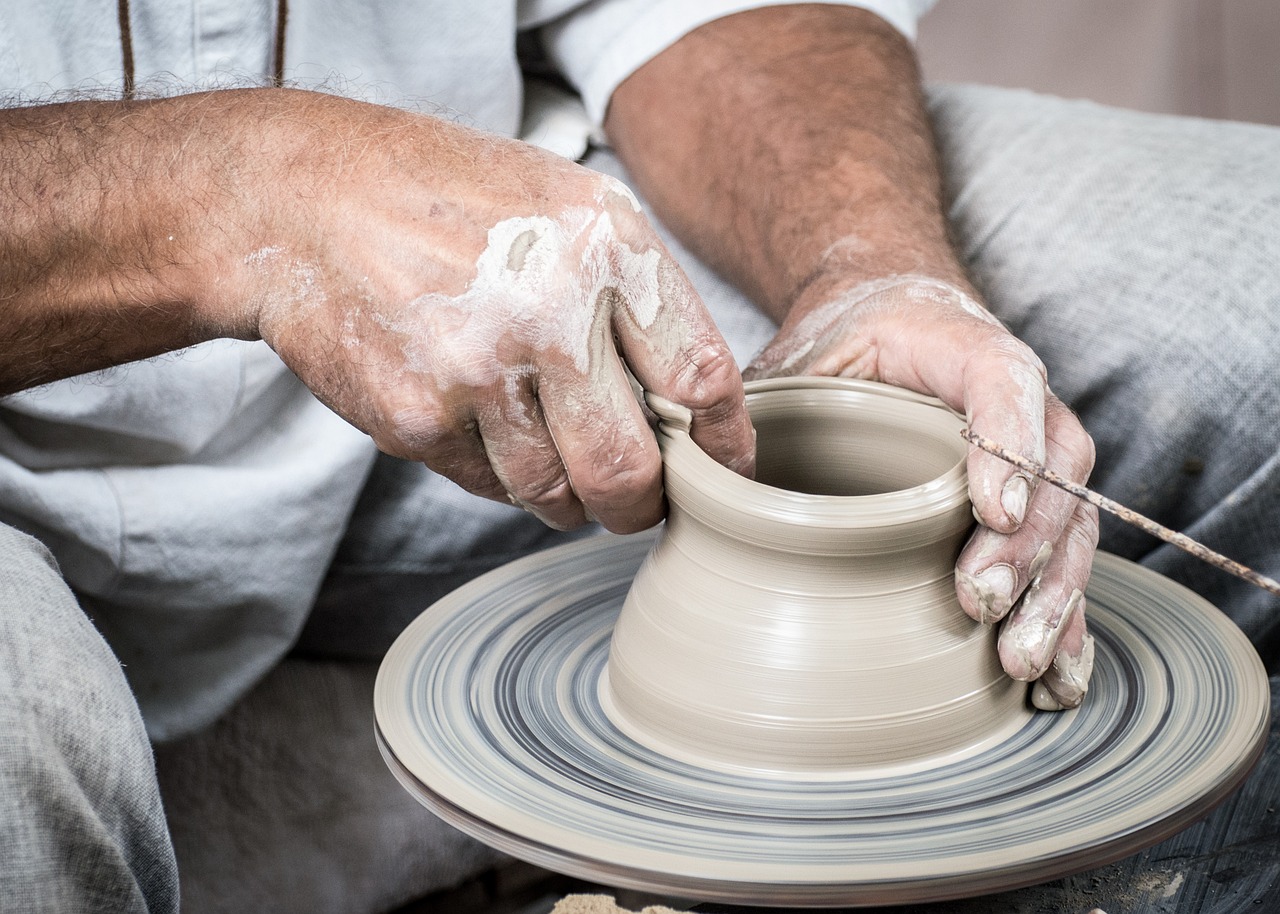
Designing an Attractive Website
When it comes to launching your online pottery store, the design of your website is absolutely crucial. Think of your website as the storefront of a physical shop; it’s the first impression customers will have of your brand. A well-designed website not only attracts visitors but also keeps them engaged and encourages them to make a purchase. So, how do you create a site that’s not just visually appealing but also functional? Let’s dive into some essential elements that will help you craft an attractive website.
First and foremost, you need to establish a cohesive brand identity. This means your website should reflect your unique style and the essence of your pottery. Use colors, fonts, and imagery that resonate with your brand. For instance, if your pottery is whimsical and colorful, your website should mirror that vibrancy. On the other hand, if your pieces are more minimalist, a clean, simple design will work best. Consistency in design helps build trust with your customers and makes your brand memorable.
Next, let’s talk about user experience (UX). A beautiful website is great, but if it’s difficult to navigate, you’ll lose potential customers faster than you can say “handcrafted.” Ensure that your website has a clear and logical structure. Use intuitive menus and categorize your products effectively. For example, you might have sections for functional pottery, decorative pieces, and custom orders. This way, customers can easily find what they’re looking for without feeling overwhelmed.
Another essential aspect is high-quality imagery. Pottery is a tactile art form, and customers want to see the details of your work. Invest in professional photography that showcases your pieces from various angles and in different settings. Consider using lifestyle images that depict your pottery in use, such as a beautifully set dining table or a cozy living room. This not only highlights the beauty of your products but also helps customers visualize how they can incorporate them into their lives.
Don’t forget about mobile optimization. With more people shopping on their phones, your website must be mobile-friendly. Ensure that it loads quickly, and that all elements are easily accessible on smaller screens. A responsive design will adapt to any device, providing a seamless shopping experience whether your customers are on a desktop, tablet, or smartphone. You wouldn’t want to miss out on sales just because your site doesn’t work well on mobile!
Lastly, consider integrating customer reviews and testimonials into your website. Social proof is a powerful motivator for online shoppers. When potential customers see positive feedback from others, they are more likely to trust your brand and make a purchase. Create a dedicated section for reviews or display them on product pages to enhance credibility.
To summarize, designing an attractive website for your online pottery store involves a blend of aesthetics, functionality, and user experience. By focusing on cohesive branding, intuitive navigation, high-quality images, mobile optimization, and customer testimonials, you can create a site that not only looks great but also converts visitors into loyal customers. Remember, your website is your digital storefront—make it count!
- What should I prioritize when designing my website? Focus on user experience, high-quality images, and cohesive branding.
- How important is mobile optimization? Extremely important! A significant amount of online shopping occurs on mobile devices.
- Should I hire a professional for website design? If budget allows, hiring a professional can greatly enhance the quality of your site.
- How can I improve customer trust on my site? Incorporate customer reviews and testimonials to provide social proof.
Frequently Asked Questions
- What are the first steps to launching an online pottery store?
Before diving in, you should start with thorough market research. Understand current trends, identify your target audience, and analyze your competitors. This groundwork will help you position your store effectively and cater to your customers' needs.
- How do I choose a niche for my pottery store?
Choosing a niche is all about finding what resonates with you and your potential customers. Whether you focus on handmade pieces, functional tableware, or decorative items, a well-defined niche can create a loyal customer base eager to support your unique offerings.
- What platforms are best for setting up my online store?
There are numerous e-commerce platforms available, each with its own set of features. Look for platforms that are user-friendly, offer customizable templates, and have good customer support. Popular options include Shopify, WooCommerce, and Etsy.
- How can I effectively market my pottery products?
Marketing your pottery store can be done through various channels. Utilize social media to showcase your creations, engage with your audience, and consider running targeted ads. Don't forget the power of email marketing to keep your customers updated on new products and promotions!
- What should I consider when designing my online store?
Your website should be visually appealing and easy to navigate. Focus on high-quality images of your pottery, clear product descriptions, and a streamlined checkout process. A well-designed site can significantly enhance customer experience and boost sales.
- How do I determine my target demographic?
Understanding your target demographic involves analyzing factors such as age, interests, and purchasing behavior. Conduct surveys or use analytics tools to gather data on your visitors and tailor your offerings to meet their preferences.
- What are some common pricing strategies for pottery?
Pricing your pottery can be tricky. Consider costs of materials, time spent creating, and competitor pricing. You might want to offer introductory pricing or bundle deals to entice first-time buyers while ensuring your prices reflect the quality of your work.



















